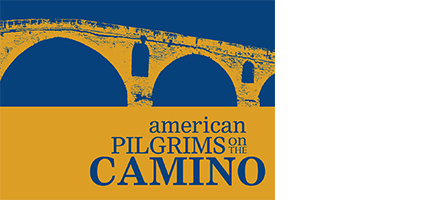Camino Aragonés Route Overview
Are you considering the Camino Aragonés? Here’s an overview for this lesser known Camino route. It offers valuable information on where the Aragonés begins (and ends), routing options, distances, key towns, the season to go and some tips on how to get there.
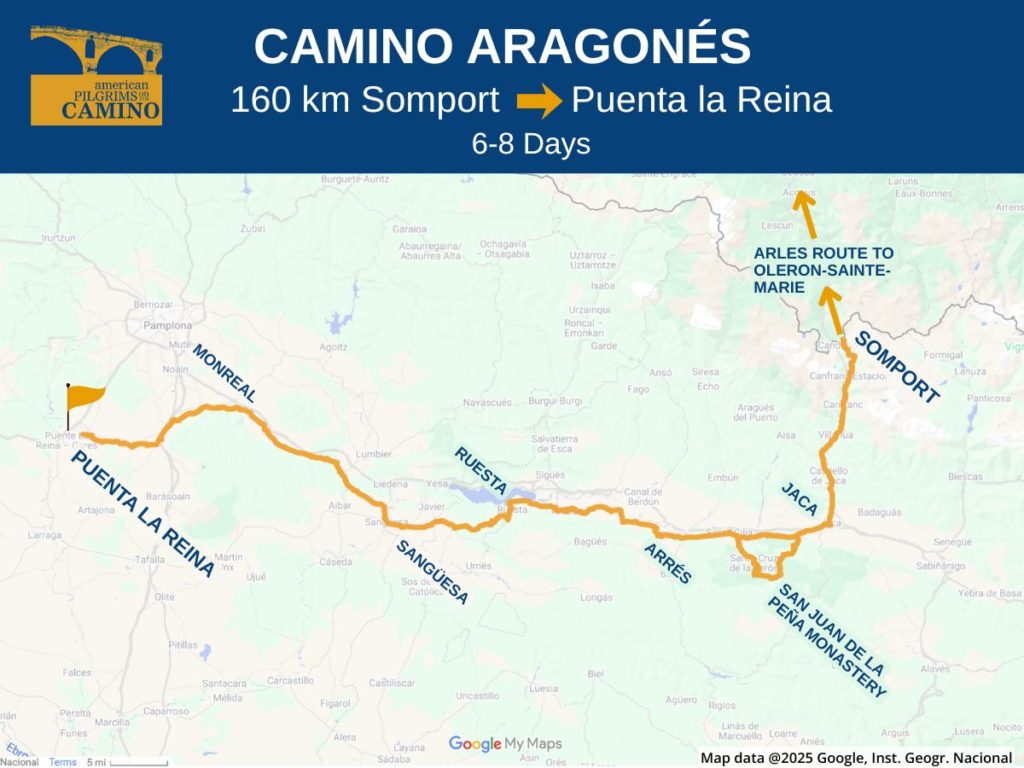
About the Camino Aragonés
The Aragonés is one of four major Camino routes originating in France. While the others funnel through Saint-Jean-Pied-de-Port, this one starts south of St. Jean and travels over the Somport pass near Canfranc. It’s believed to have been established in the 11th century, designed to connect with the Arles route, which originates on the southern coast of France.
The official route runs 160 kilometers from the France-Spain border at Somport to Puenta la Reina, where it connects with the Camino Francés. From Somport, the route transits Confranc Estación, Jaca, Arrés, Ruesta, Sangüesa, Monreal, Obanos and Puenta la Reina. But many pilgrims start further back in France, using the Arles route to reach Somport.
The Aragonés is well under the radar relative to more popular routes like the Camino Francés. It offers an alternative way to start the Francés, or is a nice route to do if you only have 6-8 days. This Way is quiet and it’s possible that you could be hiking by yourself some days, encountering just a handful of pilgrims at your lodgings at night.

Interesting Things to See and Do
The landscape is the main attraction of the Camino Argagonés, which includes Somport Pass itself, the route along the Aragón river gorge, and (via a detour to Lumbier) the Foz de Lumbier nature reserve.
However there are a few noteworthy historical sights that you may want to make time for. If you start further back in France, the monastery at Sarrance offers a pilgrim service. Just over the Somport pass is the Confranc Estación Hotel, which is a massive refurbished 1920’s train station. There’s a variant from the main route which visits the 11th century San Juan de la Peña monastery site. And there’s the lovely octagonal Church of the MarÍa de Eunate, just before Obanos. The town of Sangüesa is also quite lively, especially if you catch it on a festival day.
Popular Starting Points
Somport is the official start point for this route. But as already mentioned, some folks start further back in France using the Arles/Tolosana route before connecting with the Aragonés
- Arles (+789 km)
- Pau (+100 km), with good train connections from Paris
- Oleron-Saint-Marie (+60 km), with a train connection from Pau
How to Get Onto the Aragonés
The most popular international gateways are Paris, Madrid, or Barcelona. Regardless of your European arrival airport, plan to spend the better part of one day with multiple transfers to get to your starting point.
SCNF is the train booking service for France, and Renfe is the train booking service for Spain. Flixbus is the primary long-distance bus service for this region. But parts of the route are better served by local buses. And you can use Rome2Rio to help figure out some of the on-the-ground logistics.
How to Get to Somport
- From Madrid or Barcelona: Train from Atocha station to Zaragoza, then train or bus to Confranc Estación, followed by a local bus to Somport.
- From Paris: TGV to Pau, train transfer to Oloron-Sainte-Marie, then a bus to Somport.
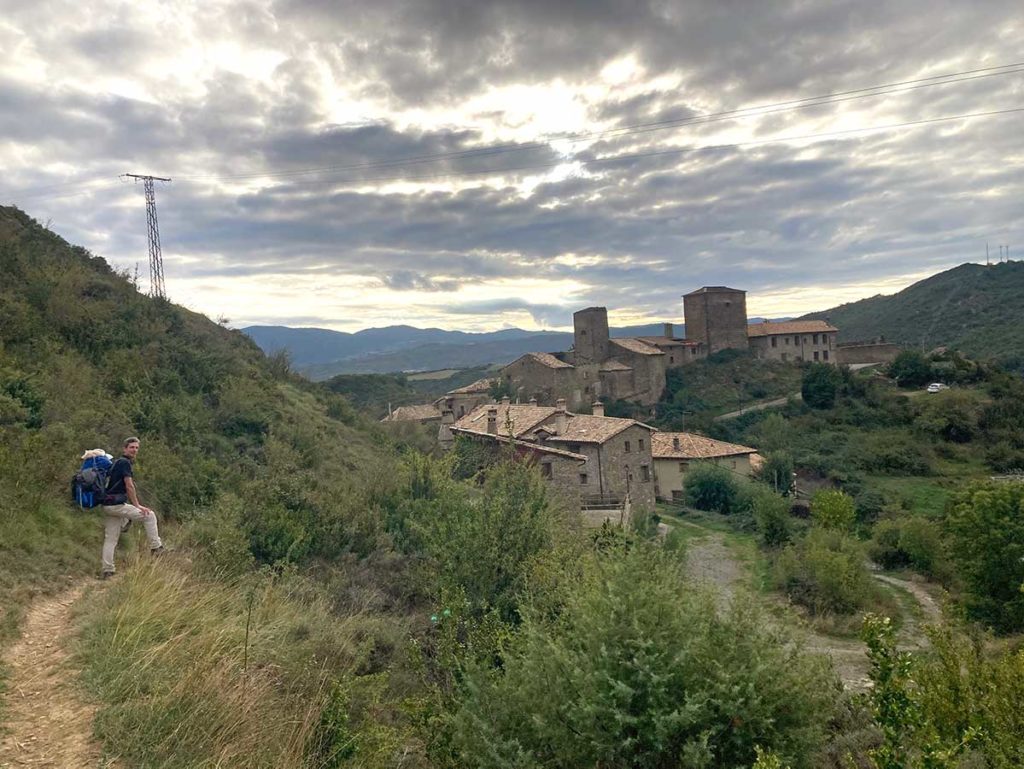
Waymarking
The waymarking on this route is excellent, but it looks a bit different from the yellow arrows that you’ll find on other Caminos. You’re more likely to encounter the red and white “GR” waymarkers, which are common in France. And, in an unusual move, the GR waymarkers continue into Spain. The paths are dotted with very frequent signposts, including kilometer count-downs.
Terrain
If you chose to start in France, expect more traditional hiking trails rather than country roads, with the trail being much wetter on the French side of the pass. After Jaca, the trail widens out and you’ll find a mix of forest path, dirt trails, and farm roads with wheat fields.
When to Go
Given the mountainous terrain, spring is tricky on this route and will vary year by year. You may find wet trail conditions or even snow. The summer months offer drier, warmer weather and a higher likelihood that tourism related businesses will be open, especially near Somport. Walking is possible in September/ October, but you may find some lodging limitations.
Accommodation & Services
On the Aragonés, towns are spaced further apart than the Francés. And while there is a range of accommodation, not all of the albergues are open everyday. That said, there are a few outstanding donativo albergues on this route, so be sure to seek them out. Some of the municipal albergues are of the DIY variety, where you simply check yourself in.
Our Camino albergue and lodging guide will give you information on what types of lodgings are available, general pricing and advice on how to book.
There are cafes and stores dotted throughout, but they may not be open everyday and they often close for holidays. So plan your food carefully and load up on snacks, just in case. There are also not as many potable public fountains on this route, so plan your water accordingly.
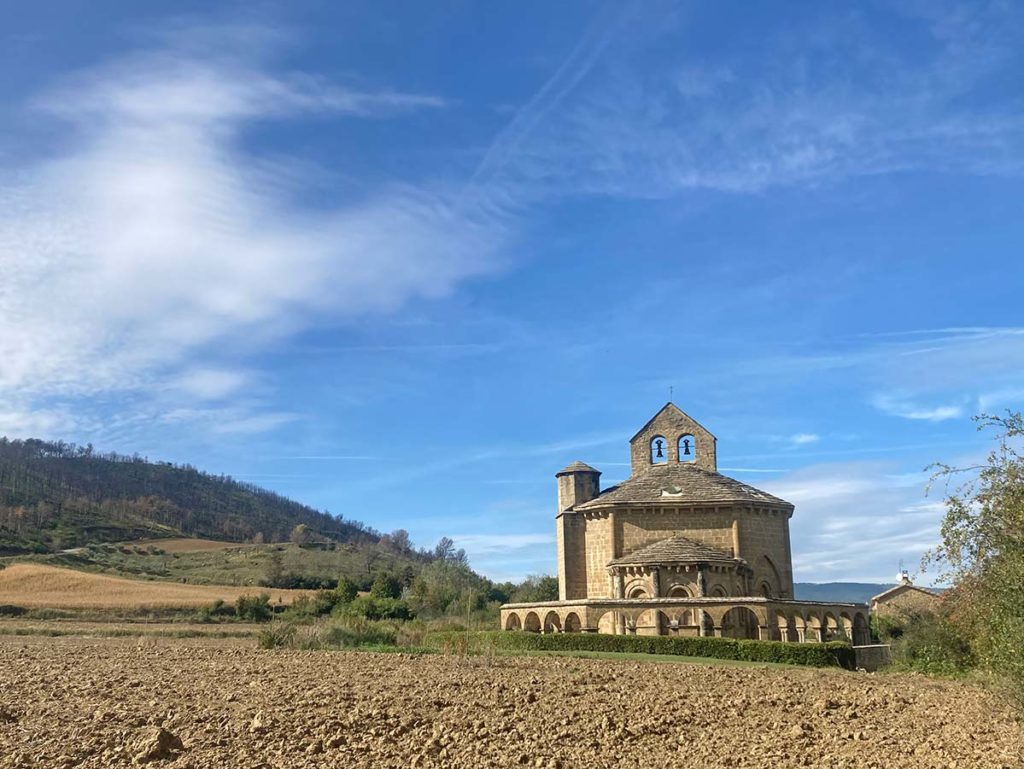
Guidebooks and Maps
The map image at the top of this page comes from this Google Map and it includes the primary GPX tracks. But it’s not designed to be your key resource. For more guidance, we recommend one of the resources below, or load in your own GPX tracks, available from the Spanish Federation.
Some of the major websites and apps offer a version for the Aragonés. You can find them listed on our apps page.
As a lesser known route, there are fewer guidebooks available. If starting in France, the Miam Miam Dodo guide (for the Arles route) has good information on routing, accommodations and services. It’s in French, but their use of icons makes it easy for an English speaker to understand.
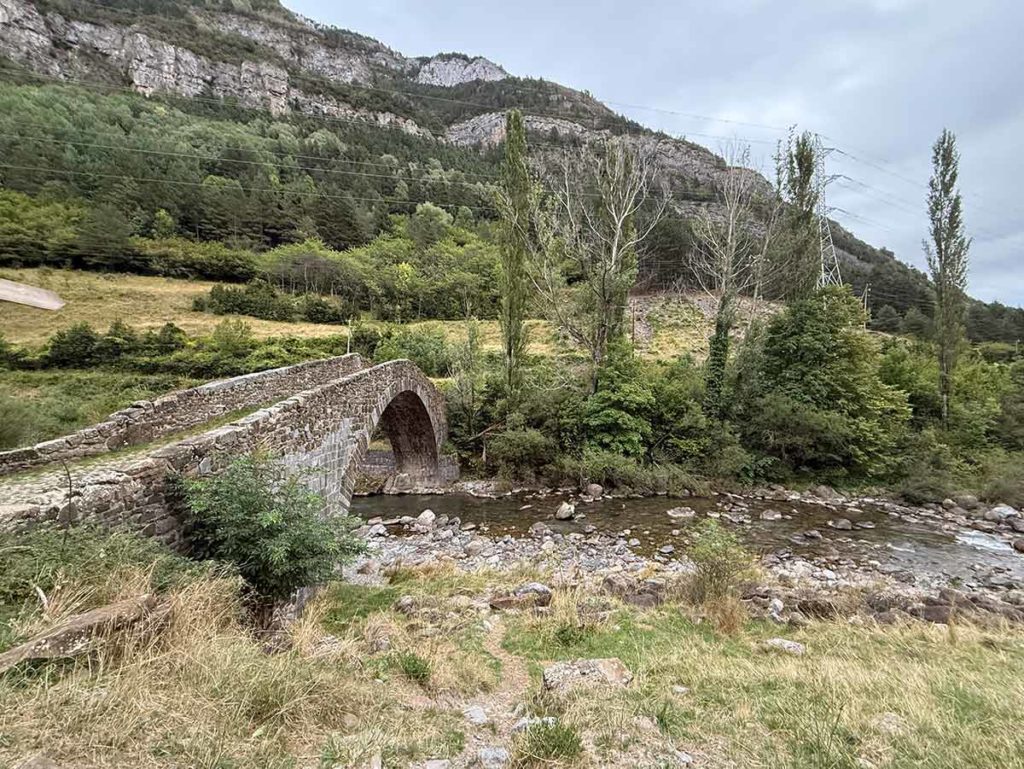
More Camino Planning Resources
Request your pilgrim credential from us in advance of your Camino.
Be sure to check out our FAQs on planning your Camino and what to expect while on the trail. Or explore other Camino routes.
If you have more questions, be sure to join a local American Pilgrims chapter or join us in our Facebook group.
Thanks to Theresa Weems and Jerry Stroebele for helping us develop this route overview. Theresa is a member of American Pilgrims on the Camino and a trained Hospitalera. She walked the Aragonés in fall of 2025. Jerry is an American Pilgrims member and a member of our Anchorage chapter. He and his son-in-law walked from Pau in the fall of 2023.
Last updated 11/6/2025

